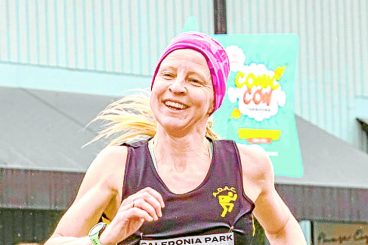LOCKERBIE’S town hall stands tall and proud in the middle of the High Street.
You’ve probably walked past it hundreds of times and been inside regularly, but how well do you actually know it and have you ever properly looked at it or considered the treasures within?
Behind the imposing sandstone walls and tower, there’s a long and fascinating history, a maze of rooms, interesting art work and some special local artefacts.
Its story started in March 1887 when it was decided the town needed a hall to mark Queen Victoria’s Diamond Jubilee.
A committee was formed and initially they considered a spot near the railway, where the Salvation Army currently sits, before settling on the current Bridge Street corner location instead.
Frank Carruthers, the architect who had built the nearby Castlemilk estate, was instructed. His design was described as ‘Scotch baronial of the 16th century’ with ‘French and Flemish peculiarities’.
Meanwhile, fundraising had begun in earnest. Most notably, a grand bazaar was organised by the ladies of the area in April 1888, raising £1790.
The hall foundation stone was laid in January 1889 “with fitting ceremony and in presence of one of the largest gatherings ever seen in Lockerbie”, according to this paper. Doing the honours was Mr Robert Jardine, of Castlemilk.
Building work took two years and went over budget, ending up with a £8500 pricetag, largely due to the £7000 spent on fixtures and fittings.
But finally, the new town hall was ready for use and it was formally opened in December 1891 by Sir Robert Jardine, of Castlemilk, who was Dumfriesshire MP at the time and one of the largest funders of the project.
The Annandale Herald said of it: “The building is not only an ornament to Lockerbie, but will be a lasting monument alike to the architect and the contractors”.
And that’s proven to be the case as today, 132 years on, it remains in remarkably good condition inside and out – although not everything is as it was at the opening.
According to reports from that time, there was a ‘richly panelled frieze’ on the Bridge Street side of the building, about 15 feet up from street level. What happened to it?
The front office was originally the town’s library, while the town’s offices were across the corridor.
And there was an entrance at the front specifically for the animals coming to the lamb fair and other markets.
Furthermore, once upon a time there was a little door leading to a tunnel under the road to the station but it’s no longer in use, and neither is the janitor’s flat on the upper floors.
However, the most striking, and poignant, change is the addition of the memorial window, designed by John Clark and featuring the flags of all the nations affected by the 1988 tragedy.
It was installed in 1991 and still attracts visitors from around the world every month to view it.
Other artefacts from the time of the disaster are also on display in the hall, along with several items pertaining to Lockerbie’s civic history, like the provost’s robes and souvenirs from the long-gone lawn tennis club.
But many things are still the same in the grade two listed edifice as would have been in 1891: the original bell remains in situ and chimes on the hour; the cupola sits high above the stairs; while the colour scheme has recently been taken back to what it would have originally been.
Dumfries and Galloway Council keep the town hall wind and watertight and employ the three janitors/caretakers, but all the other jobs are done or overseen by the volunteer management committee.
Acting chair Fiona McDonald explained: “It’s open seven days a week but there’s no official opening hours, we are basically open when the community asks for it, if we can.
“It has a capacity in excess of 400 and still has an important role to play in the town and there’s a good range of clubs and groups using it and activities going on. We are busy and it’s getting back to where it was before covid.”
Among the regular users traipsing in and out are both four legs and two, with bookings ranging from puppy training classes, youth work, pilates, yoga, pickleball and messy play, to badminton, baton twirling, adult ballet, the community council, gala ceremonies and the SWI, as well as coffee mornings and private functions.
As such, they are in desperate need of more townsfolk to join the management committee and help keep it ticking over and ensure the high standards continue long into the future. Anyone interested is urged to make contact through the town hall office.























